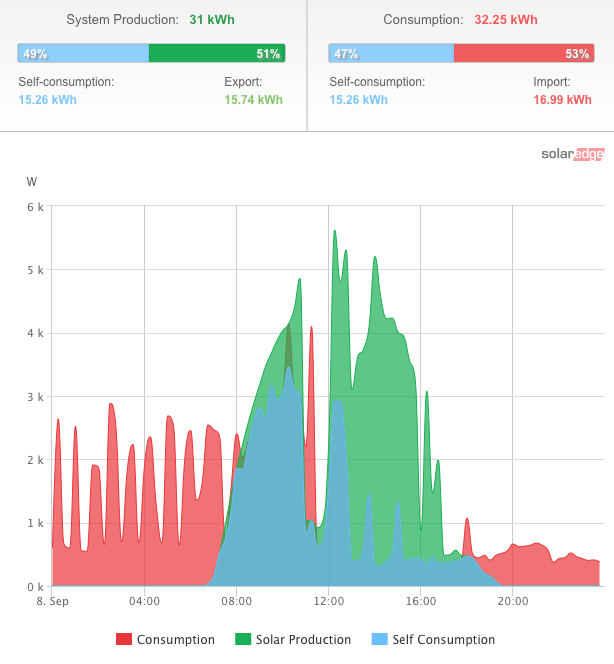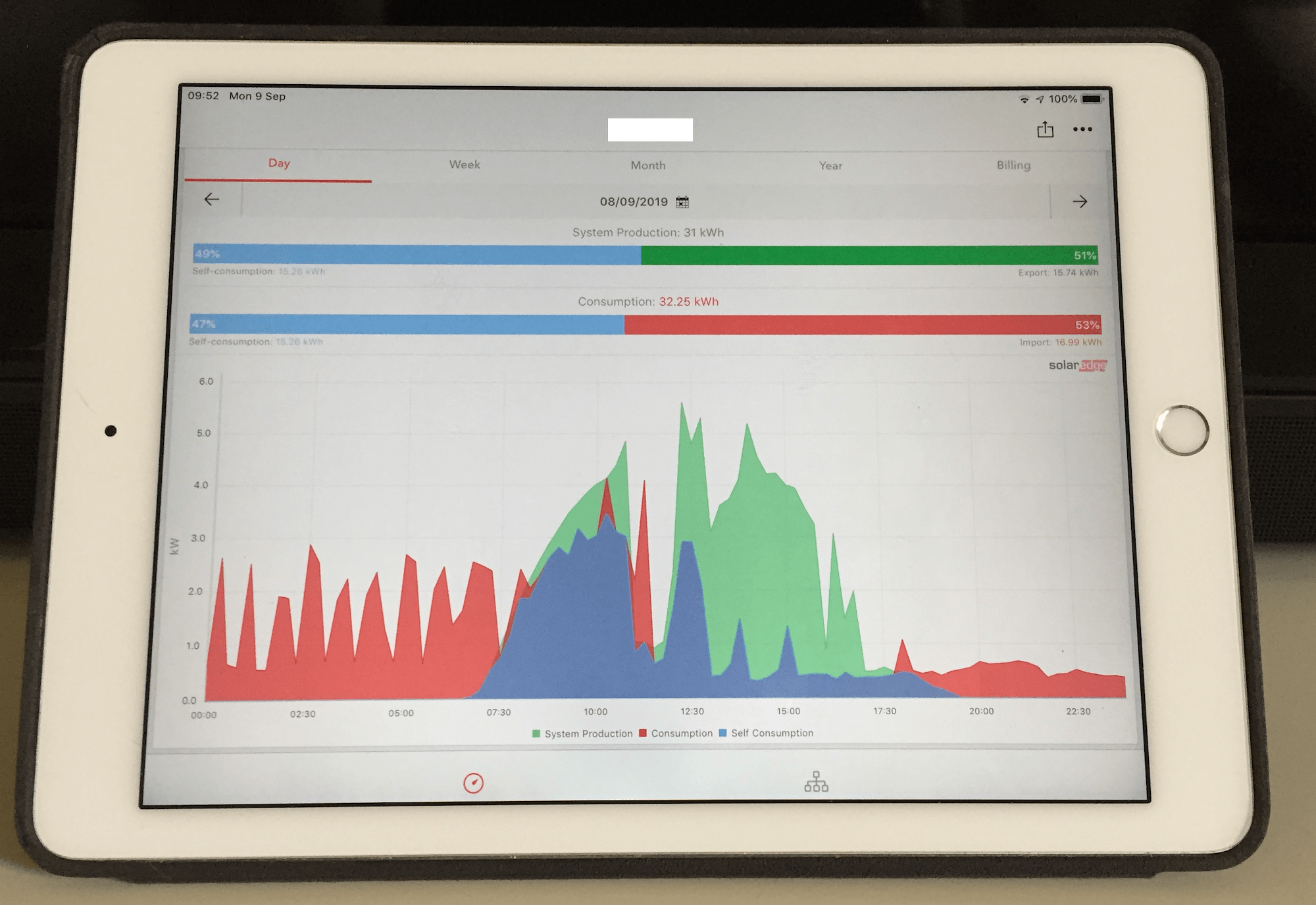When we had our solar PV panels and SolarEdge inverter installed, I thought that the SolarEdge app would simply tell you how much energy we’ve generated (which it does), but it also provides realtime data on self consumption and export, and the app has become a hugely important tool in helping us to understand and evaluate our home energy usage.
The fact that I can log into the app on my iPhone, iPad or via the web browser on my Mac, and get a full breakdown of our energy usage (current or historical) is hugely valuable to us because we consume a lot of power as a household.
Let me take yesterday’s data and show you what I mean.

At a quick glance, we can see that we produced 31kWh of electricity (roughly half of which was exported) and we consumed 32.25kWh. The 31kWh is decent amount of production from our 6.16kW solar PV system on a partly cloudy day.
The value that we get from this graphic is what is happening from midnight, and it’s got nothing to do with solar production – you can see a lot of consumption spikes in the 2-3kW range. That is our air source heat pump kicking in to heat the house.
So I can derive that we used approximately 20kWh of electricity over the course of the evening to heat our house, which gives me a really good idea of how much we’re paying for our heating. Based on our current rate, it cost us about £3 to heat our house over the course of the cold early morning hours, which is very reasonable when compared to our oil boiler.
I try to view our data at least once a day, and the reason I do this is to check our solar production and to see if there are any consumption anomalies. Looking at the graph above, there’s a significant spike at 11am. Typically that happens when we turn on the tumble dryer or dishwasher, but we didn’t do that yesterday so it’s a strange spike and one we don’t have an explanation for.
I will now monitor the app to see if we get any more significant consumption spikes, and if we do, we’ll try to track down the culprit because we want to be running as efficiently as possible and it’s an integral part of us trying to become as sustainable as possible.
